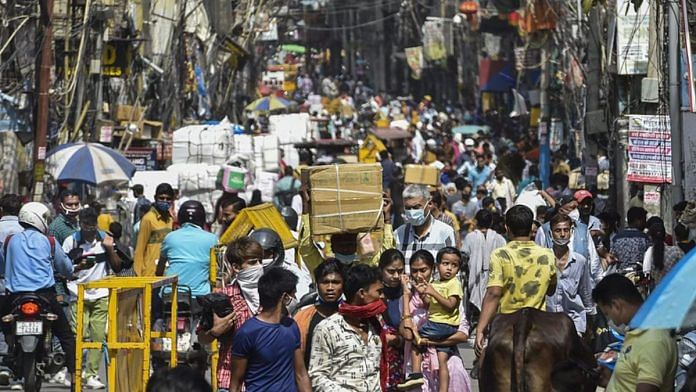Thank you dear subscribers, we are overwhelmed with your response.
Your Turn is a unique section from ThePrint featuring points of view from its subscribers. If you are a subscriber, have a point of view, please send it to us. If not, do subscribe here: https://theprint.in/subscribe/
Most writers and economics commentators write very positively about India’s human capital. About the positive age profile of India’s population— for instance, 65% of our population is below 35 years; and 50% of our population is below 25 years.
Very few commentators discuss the unsatisfactory state of our human capital. And how the very same demographic dividend could easily turn into a social nightmare. I refer to the largely sub-standard quality of primary school, secondary school, and undergraduate education. As well as our seriously deficient public health infrastructure.
The 28th June 2023 Economist article on the lacunae in Indian school education reports that “many of the 265 million pupils enrolled in its schools will leave them barely able to read or do basic maths”.
There have been some school infrastructure improvements in the recent past. Such as the fact that more schools now have functional toilets. And I commend PM Modi’s and respective State Governments for their efforts in this regard. However, the availability of high-quality teachers with adequate teaching tools, such as PCs, etc. with Internet connections has a long distance to cover.
The same Economist article states that, according to an ASER (annual status of education report), an affiliate of Pratham, survey in 2022:
- Only 40% of 10-year-olds in government schools (less than 60% in private schools) can read text meant for 7-year-olds.
- Only 22% of 10-year-olds in government schools (40% in private schools) can divide numbers.
While I am, like many Indians, most appreciative of the central government under PM Modi’s leadership for its manifold development initiatives, it is my deep desire that the GOI collaborates with State Governments that have done some good work in the area of education. And also in health – the other big drag factor on India’s human capital.
From my readings, I might humbly state that the AAP government in Delhi has done some very good work in the area of primary and secondary schooling in Delhi. GOI should study the positive features of Delhi’s schooling system and work with other State Governments to replicate the success achieved in Delhi schools, across schools in UP, Bihar (to begin with), and other relevant states.
Let us not lose the good work done in States just because election dynamics do not encourage us to appreciate great work done by some other State Governments. We could also learn from the good work being done in this regard by the Azim Premji Foundation as well as from some missionaries such as the Salesians of Don Bosco and other missionaries.
Which brings me to the subject of our sub-standard healthcare system. At the height of the pandemic, it was seen that Kerala had foreseen the requirement for medical Oxygen production facilities and saved some thousands of patients, while in some other states, patients died for want of Oxygen. Kudos to Mrs. Shailaja, then Kerala’s Health Minister.
In the interest of improving the state of India’s human capital, there is indeed a strong case for GOI to collaborate with the Kerala government and replicate the positive features of Kerala’s health infrastructure in other states where health facilities are seriously deficient. After all, collaborations between the GOI and State governments are co-operative federalism. Such collaborations for the development of India’s human capital are a very laudable objective indeed.
And now for the last point in this outpouring. Why are we Indians not able to allocate a higher percentage of our annual budgets to education and health? Currently, GOI spends just 3% of GDP on education and about 2% for health! I would request PM Modi to set up a Mission Education, a Mission Health, and a Mission Employment to identify steps to reach global standards in education and health. All these missions should work in collaboration with relevant State Governments.
These pieces are being published as they have been received – they have not been edited/fact-checked by ThePrint.

